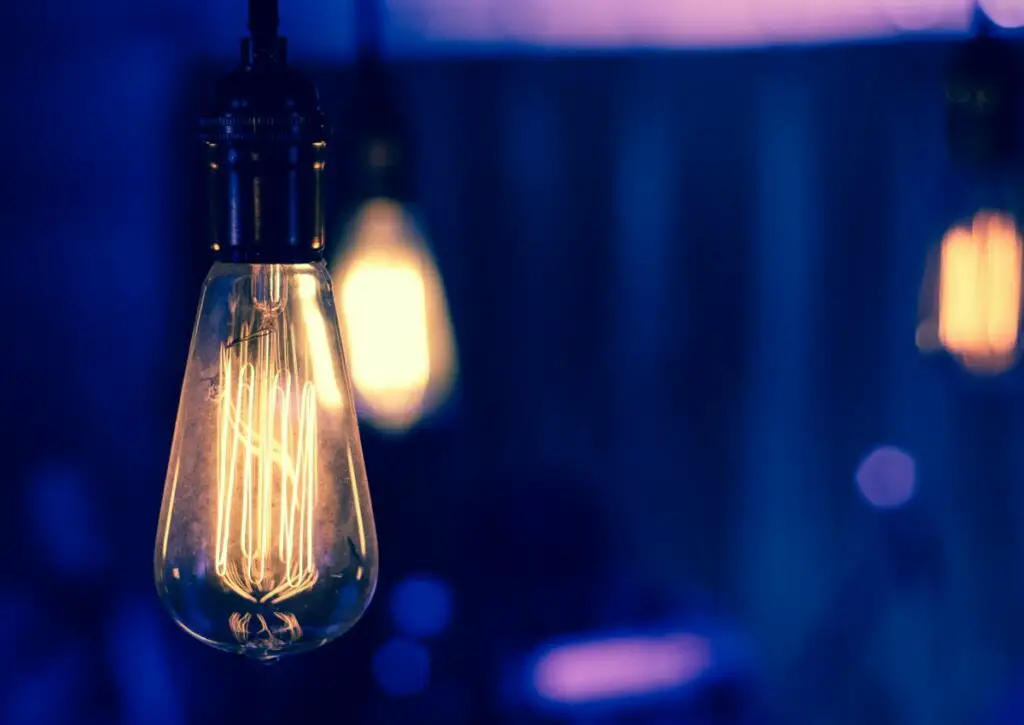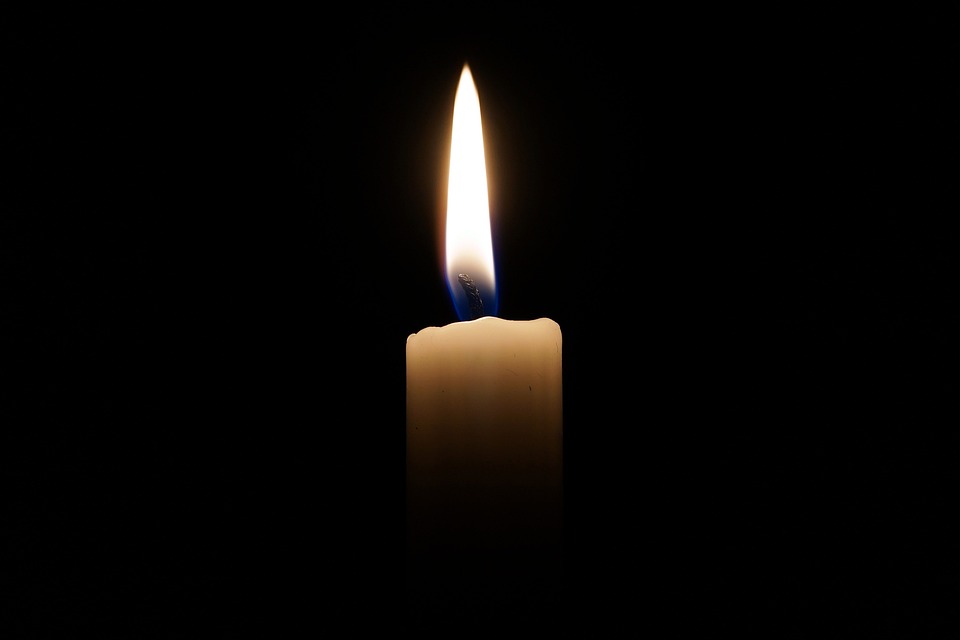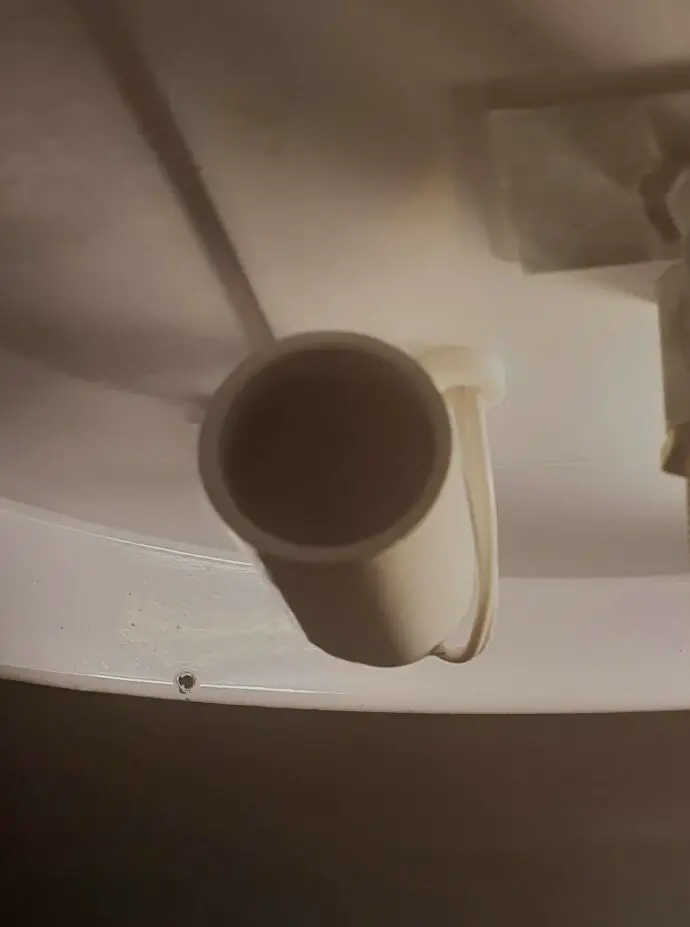How Bright Is Different Lumens? 10-2000+ Lumens Explained
When looking for lighting options you may have found that it’s increasingly more common that the strength of light bulbs is now referred to as “lumens” instead of Watts like you are probably used to.
Watts is an outdated way to view the brightness of a light bulb since two different types of light bulbs can use the exact same watts but produce vastly different amounts of light. For this reason, it makes more sense to refer to a light’s strength by its lumen value.
100 lumens is roughly equivalent to a 6W incandescent lamp or an average flashlight whereas 1600 lumens is closer to a 100W lamp. This means that 100 lumens are not perceived as particularly bright whereas 1600 lumens is normally pretty bright in most circumstances.
While it can be pretty difficult to navigate this change this article is supposed to give you a better understanding of how bright the different lumen values are perceived and how they relate to different light bulbs.

Contents
What Are Lumens In Lighting?
To properly explain how bright different lumen values are we should first try to understand what lumens are in the first place.
Lumens (lm) is a unit of measurement which describes the light output of any given light source. This is also often called “luminous flux” and is commonly used by lighting manufacturers to describe how much light their lights give off.
Lumens are measured by how much light they produce in every direction and have a mathematical connection to the unit Candela (cd) which originates from the power of candles. For a more in-depth article on What Lumens Are In Lighting, I recommend you check out my article on that here.
As a general rule of thumb, it’s fairly accurate to say that 1 lumen = 1 candle of light at a distance of around one foot or ~30cm.
Luminous Efficacy And Its Importance (Lumens To Watt)
Before going into full detail on how bright different levels of lumens are it’s important to discuss luminous efficacy. This is because different types of light bulbs can produce the same lumen amount using different amounts of Watts (W).
Watts is a unit of power, electrical power to be precise. That means that the energy consumption of any given light bulb can be labaled with a Watt.
But here is where the important part comes in. Different types of light bulbs can use vastly different amounts of Watts and still end up having the same luminous flux (lumens).
For example, in order to achieve 1000 lumens from the four most common bulb types it would differ quite a bit. To reach 1000 lumens you would need:
- A 60W incandescent bulb
- A 36W halogen bulb
- A 17W compact fluorescent bulb
- A 7W LED bulb.
That is vastly different energy consumptions even though they actually produce the same amount of light. For this reason we use the term luminous efficacy to determine how efficient a light bulb is at converting energy to light.
Luminous efficacy is measured in Lumens per Watt (lm/W) and directly describes how much light a bulb outputs per 1 watt. Here is a chart describing the luminous efficacy of most common light bulb types.
Something to note about this chart is that it lists the maximum luminous efficacy. The luminous efficacy can vary a bit from bulb to bulb or from model to model. Most of the common versions of these bulbs don’t always reach values this high.
For more information on the ranges of luminous efficacy between these bulbs I’d recommend you find those numbers the article The Different Types Of Light Bulbs.
Here is a table which describes the equivalent wattage of incandescent light and LED light to different lumen levels. This should help you get a feeling for how bright lumens are in comparison to the incandescent watt measurement you’re likely used to.
| Lumen (lm) | Incandescent | LED |
|---|---|---|
| 10 | 1W | 0.08W |
| 50 | 3W | 0.35W |
| 100 | 6W | 0.7W |
| 200 | 12W | 1.5W |
| 300 | 20W | 2W |
| 400 | 25W | 3W |
| 500 | 30W | 3.5W |
| 800 | 50W | 5.5W |
| 1000 | 60W | 7W |
| 1600 | 100W | 12W |
| 2000 | 125W | 14W |
| 2500+ | 150W+ | 18W+ |
The Brightness Of Different Lumen Values
Now that we have a rough idea of what lumens are we can look at different values of lumens and determine roughly how bright they are.
That said, it’s important that we distinguish between brightness and lumens. The difference between these is that lumens are a strict number-based digit whereas brightness is the subjective measurement of how bright something feels.
Because one is subjective and one is objective these are not the same. That said, I’ll try to provide the most accurate descriptions for each lumen level so you can also decide for yourself if the description is what you would consider bright or not.
Brightness Of 10 Lumens
10 lumens is not very bright at all. It is the rough equivalent of the amount of light a regular wax candle would give off, which is around 12 lumens.
This is also roughly equivalent to the luminous flux of a small LED chip. Smaller LED chips normally output around 8-14 lumens and are often used together in mass to create LED light bulbs.
Items that commonly give off 10 lumens include:
- Some small keychain lights
- Some book lights
- Some battery-operated candle lights
- Some decorative fairy lights
- Some night lights
- Some battery-powered accent lights.

Brightness Of 50 Lumens
50 lumens is also not particularly bright. It’s equivalent to about 4 wax candles and a 3W incandescent lamp.
That said, 50lm lighting has its purposes. 50lm is often used when a feeling of comfort and cosiness is supposed to be central and for some accenting lighting.
Some examples of where you would use a 50-lumen light would be for a night light or garden lighting outside. The aim of these lights isn’t necessarily to provide enough light for intense tasks, but rather to provide ambience and a feeling of comfort.
Items that commonly give off 50 lumens include:
- Small to medium-sized flashlights
- Some bike lights
- Some camping lanterns
- Some small desk lamps
- Some battery-powered work lights
- Some handheld spotlights
- Some rechargeable headlamps.
Brightness Of 100 Lumens
100 lumens is not considered particularly bright. It is roughly equivalent to an 8W incandescent light and a 1.5W LED. As you can imagine, that is normally not enough to light up an average room. That said, there are plenty of applications for which you would only use 100 lumens.
One common application where 100 lumens are used is for flashlights. For areas that are extremely dark, any light will appear as a lot of light, meaning that in the dark a 100-lumen flashlight will feel strong enough.
Another common application of 100lm lighting is for emergency lights. Emergency lights are designed to light up the path to the nearest emergency exit. This makes 100lm ideal since it’s enough to light a path but not so big that it makes the normally installed lighting redundant.
Items that commonly give off 100 lumens include:
- Some lanterns
- Some bike lights
- Some portable LED lights
- Some hand-held spotlights
- Some rechargeable work lights
Brightness Of 200 Lumens
200 lumens is generally regarded as being on the lower end of the brightness spectrum when it comes to lights. It is roughly equal to a 15W incandescent bulb or a 2W LED bulb.
Much like 100 lumens, lights with a strength of 200 lm are often used for outdoor applications. A few examples of where you’d use 200 lm are for stronger flashlights or bike lights.
In the dark, the 200 lumens will feel pretty bright since the contrast between it and the darkness is a lot, meaning that you generally don’t have to go above 200 lm for illuminating a path in the darkness outside.
Items that commonly give off 200 lumens include:
- Some mid-sized flashlights
- Some lanterns
- Some portable LED work lights
- Some rechargeable camping lights
- Some handheld spotlights
- Some small LED projectors
Brightness Of 300 Lumens
When we get to 300 lumens we start reaching the lower end of moderate light. It is roughly equal to a 20W incandescent bulb or a 2.5W LED bulb.
Some examples where 300 lumens is useful are LED strips or strong camping flashlights. At 300 lumens you can also find some LED spotlights and stronger reading lights.
Items that commonly give off 300 lumens include:
- Some portable LED work lights
- Some rechargeable camping lights
- Some handheld spotlights
- Some compact LED projectors
- Some small lanterns
Brightness Of 400 Lumens
At 400 lumens we have a light output that is comparable to a 25W incandescent light bulb or a 3W LED bulb. While 400 lumens isn’t the brightest bulb ever it can still comfortably light up a smaller room on its own.
Other applications of lights with 400 lumens are TV screens as well as most LED strips and LED spotlights. It’s also a brightness which can be useful for accentual lighting in areas which are already bright.
Items that commonly give off 400 lumens include:
- Some larger flashlights
- Some lanterns
- Some handheld spotlights
- Some portable LED work lights
- Some compact LED projectors
- Some small rechargeable floodlights
Brightness Of 500 Lumens
500 lumens is comparable to the light output of a 30W incandescent bulb and a 3.5W LED bulb. This is generally not considered that bright but much like 400 lumens it can undoubtedly light up some smaller spaces comfortably on its own.
500 lumens is also comparable to the light output offered in the brighter end of headlamps.
Items that commonly give off 500 lumens include:
- Some larger LED flashlights
- Some lanterns
- Some handheld spotlights
- Some portable LED work lights
- Some compact LED projectors
- Some small rechargeable floodlights
- Some desk lamps
Brightness Of 800 Lumens
The next notable amount of lumens is 800 lumens. 800 lumens is roughly equal to a 50W incandescent light or a 5-6W LED. This is normally enough to light up any small to medium-sized room comfortably when placed in the centre of the space.
800 lumens is also the median of the lumen output for smart bulbs. The lumen range for smart bulbs tends to be between 650-1600 but most are found at a lumen of around 800.
Items that commonly give off 800 lumens include:
- 28W halogen bulbs
- 13W compact fluorescent bulbs
- Some LED strips
- Some LED downlights
Brightness Of 1000 Lumens
1000 lumens is roughly equal to a 60W incandescent bulb and a 7W LED bulb. This is enough to light up most enclosed areas of medium size.
Items that commonly give off 1000 lumens include:
- 35W halogen bulbs
- 17W compact fluorescent bulbs
- Smart LED lights
- Some LED bulbs
- Some LED downlights
Brightness Of 1600 Lumens
1600 lumens is roughly equal to a 100W incandescent bulb and a 12W LED bulb. This is as bright as most commonly found bulbs get since it’s not common for home instalments to be equipped to handle larger bulbs than 100W incandescent ones.
1600 lumens is plenty bright for most indoor spaces. It may even be considered too bright in most home environments excluding areas such as a kitchen or living room where you want a lot of light.
Items that commonly give off 1600 lumens include:
- 57W halogen bulb
- 27W compact fluorescent bulbs
- Some stronger smart LED lights
- Some stronger LED downlights
Brightness Of 2000 Lumens
2000 lumens is roughly equal to 125W incandescent light and a 14W LED bulb. This is very bright in terms of regular household lighting and is more than enough to light most home-sized indoor areas.
Items that commonly give off 2000 lumens include:
- Some high-powered LED flashlights
- Some high-powered lanterns
- Some high-powered LED work lights
- Some LED projectors
- Some rechargeable floodlights
Brightness Of 2500+ Lumens
At 2500 lumens and above we start entering a realm of lighting which is very bright and would almost never be used in a home application. However, lights this bright still have plenty of usage on larger-scale projects.
Items that commonly give off 2500 lumens or above include:
- Some large LED stage lights
- Some LED projectors
- Most street lights
- Most road lighting
- Most arena lighting
General Recommendations And Guidelines For Lumens
Lumens is a great way to measure light and all lumen levels are applicable for various things as we’ve now learned. That said, here are some general recommendations for how and when to use these different lumen lights.
- 10-300 lumens is best used for soft decorative light. If you are lighting up a garden or want a soft light outside a light in this range would probably be ideal since it provides ambiance without providing too much light.
- 300-800 lumens are best used indoors for most home applications. Lights in this range should be used for areas like bedrooms and bathrooms for example since they need a comfortable light level, which lights in this range normally provide.
- 800-1600 lumens are best used indoor for areas where work or other activities are meant to take place. Some examples of this would be in a living room or a kitchen.
- 1600+ lumens lights are best used outdoors for larger areas that need light for practical purposes and not ambiance. Some examples of this would be street lights or road lights. These are normally not used in a home environment.
You can choose whatever lumens you want for your application as long as its fixture allows it, these are simply some recommendations and common applications for lights of these lumen levels.
The lumen level you will want for your lighting will depend on factors such as how large of an area they are meant to light and how bright you wish for it to be percieved as.
Summary
To summarize this article, lumens are an important measurement in lighting which measures the light output of any given light bulb.
You can find bulbs of different kind that produce the same amount of light and uses different amounts of energy to do so. This is why luminous efficacy (lm/W) is important to measure the efficiency of these bulbs.
While all lumen value lights have their applications it’s commonly bulbs with a lumen between 300-800 that gets the most use in the home due to how we typically perceive the light in this range to be a good amount of brightness for our homes.





